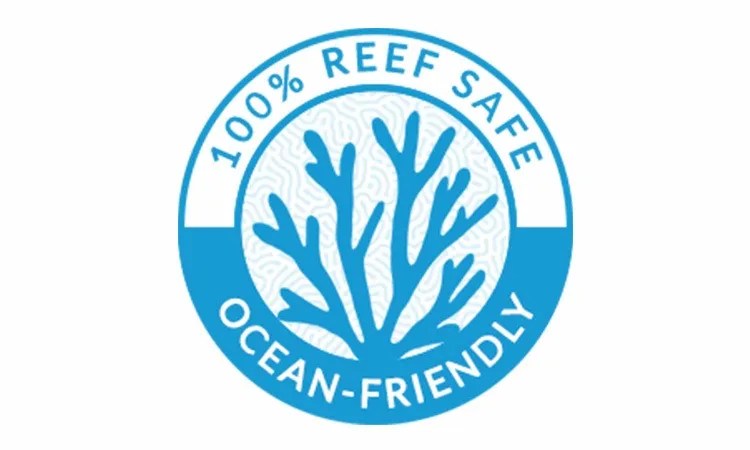The Importance of Reef Safe Sunscreen for Grand Cayman Snorkeling

If you’re planning to experience the best snorkeling in Grand Cayman — whether it’s Stingray City, Coral Gardens, Starfish Point, or a hidden reef on your private Crazy Crab charter — sunscreen is a must! But not just any sunscreen will do. To protect both your skin and our fragile marine environment, we encourage all our guests to choose reef safe sunscreen before heading out on the water.
What Is Reef Safe Sunscreen?
Not all sunscreens are created equal. Reef safe sunscreen is made with mineral-based ingredients — usually non-nano zinc oxide or titanium dioxide — that sit on top of your skin and reflect harmful UV rays, instead of soaking into your skin or washing off in the water as quickly. Unlike chemical sunscreens that contain oxybenzone or octinoxate (two chemicals linked to coral bleaching), reef safe formulas protect you without harming corals, starfish, or other marine life.
It’s a simple switch that helps keep Grand Cayman’s reefs healthy and colorful — so you can enjoy the best snorkeling in Grand Cayman for years to come.
Why Reef Safe Sunscreen Matters
When you dip below the surface during your Grand Cayman snorkeling adventure, the vibrant colors of the coral reefs are breathtaking. Those bright hues come from a partnership between coral (which is actually an animal!) and tiny algae called zooxanthellae. These algae live inside the coral’s tissue and create food for the coral by turning carbon dioxide into oxygen, sugars, and fats — a process very similar to how plants feed us.
But here’s the problem: when corals become stressed by heat or harmful chemicals in the water, they evict these algae and turn ghostly white — a process known as coral bleaching. Without the algae, the corals struggle to survive. If they die, the entire reef ecosystem suffers, leaving fish, turtles, and countless other creatures without a home.
One surprising culprit? Sunscreen. It’s estimated that up to 6,000 tons of sunscreen wash into reefs worldwide every year. Two common chemicals — oxybenzone and octinoxate — are particularly harmful, contributing to coral bleaching and disrupting marine life.
The Good News — Reef Safe Sunscreen Is Easy to Find
Luckily, there’s an easy solution! Reef safe sunscreen is now widely available and designed to protect your skin without harming coral reefs. These sunscreens skip the toxic ingredients and use mineral-based protection (like zinc oxide or titanium dioxide) that’s safe for marine life.
Communities around the world — and here in the Cayman Islands — are stepping up to make reef-friendly sunscreen the new standard. Hawaii has banned sunscreens containing oxybenzone and octinoxate, and in many places, including California, you can even find reef-safe sunscreen at beach dispenser stations.
At Crazy Crab, we love seeing our guests use reef safe options. It’s a small change that makes a big difference for the health of our reefs and helps keep Cayman’s waters among the best snorkeling in the Caribbean.
Special Note for Starfish Point
Reef safe sunscreen isn’t just about coral — it’s important for the starfish too! When you visit Starfish Point on your Crazy Crab charter, you’ll likely want to hold these fascinating creatures for a closer look. But if you have regular sunscreen on your hands, the chemicals can harm them.
Here’s what we recommend:
- Apply your reef safe sunscreen at least 15–20 minutes before you get in the water, so it has time to absorb.
- Rinse your hands in the sea before touching any starfish.
- Always hold starfish gently, just under the surface of the water — never take them out into the air.
These simple steps help keep Starfish Point healthy and thriving so future visitors can enjoy it too.
Snorkeling Tips to Protect the Reef
Using reef safe sunscreen is just one way to help protect the underwater world you’ve come to enjoy. Here are a few more tips:
- Float, don’t stand — standing on coral can crush or kill it.
- Keep fins away from the reef — even a light kick can break delicate coral.
- Look, don’t touch — avoid handling corals, sponges, or other creatures.
- Take only pictures — leave shells, sand dollars, and starfish where they belong.
These small actions help ensure that Grand Cayman’s reefs stay healthy for future generations of snorkelers.
What Makes Sunscreen Reef Safe?
Before packing for your trip, flip that bottle over and check the ingredient list. Here’s how to identify a reef safe sunscreen:
- Say no to oxybenzone and octinoxate — these are the two biggest offenders for coral reefs.
- Look for “reef safe” or “reef friendly” labels — and choose mineral-based sunscreens with non-nano zinc oxide or titanium dioxide.
- If you buy in Cayman, ask for reef-safe brands. Kirk Market in George Town usually carries a good selection, so you can grab some before your Crazy Crab charter.
And remember — sunscreen isn’t just for the beach. Cayman’s sun is strong all day long, so apply before you head out on the boat and reapply after swimming to keep your skin happy and sunburn-free.
Protecting Cayman’s Reefs Together
By choosing reef safe sunscreen, you’re helping preserve the coral reefs that make Grand Cayman snorkeling so spectacular — and protecting the starfish, stingrays, and other marine life that make our charters so unforgettable.
So pack your reef safe sunscreen, grab your mask and fins, and get ready for some of the best snorkeling in Grand Cayman. Your skin (and the fish and starfish!) will thank you.
Book Your Private Crazy Crab Charter and see Cayman’s underwater world the right way — safely, responsibly, and at your own pace.





